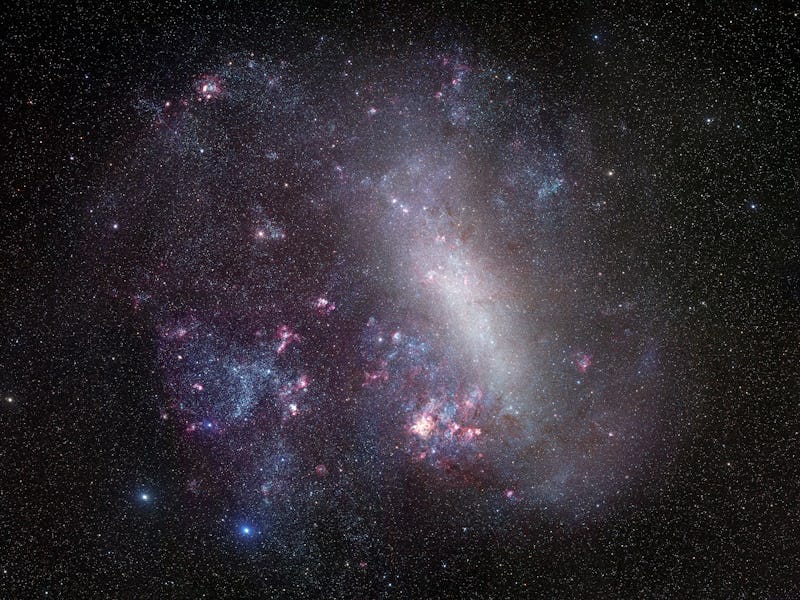Hubble finds a wall of hot plasma acting like a shield for two nearby galaxies
Gas heated to half a million degrees protects two small galaxies.

A guardian halo protects a galactic pair from the rough grasp of the Milky Way, according to archival data from two veteran space missions.
In the southern sky shine two smudges, known as the Large and Small Magellanic Clouds. They are satellite galaxies of the much larger Milky Way, and one of their qualities has puzzled scientists. As the Clouds tumble through space, the Milky Way should be exerting enough gravitational force to knock loose their star-making material. But the smaller galaxies are still building new stars. A study published Wednesday in the journal Nature finally explains it.
What they did — “A lot of people were struggling to explain how these streams of material could be there,” Dhanesh Krishnarao, assistant professor at Colorado College and lead author of the new study, says in a NASA description of the paper. “If this gas was removed from these galaxies, how are they still forming stars?”
Krishnarao’s team looked through the archives of two space missions — the Hubble Space Telescope and the retired Far Ultraviolet Spectroscopic Explorer (FUSE) satellite. In particular, the astronomers searched for ultraviolet observations of quasars located billions of light-years behind the Clouds.
Astronomers detected the Magellanic Corona by analyzing patterns in ultraviolet light from 28 distant background quasars. On the top left shows the Milky Way if it was faraway from the viewer. The purple orb on the left represents the Magellanic Clouds. The halo is outlined around them.
Here's the background — Quasars are a handy astronomical tool. They are churning cores of faraway galaxies that shine bright enough to pierce through great distances. They are reliable sources of light that help astronomers gauge objects much closer to Earth.
In this case, the quasars served as a litmus test for the mistiness that would prove the existence of a halo. Previous models suggested a cocoon-like structure could explain how the Large and Small Magellanic Clouds retained their star-making ingredients.
“The team reasoned that although the corona would be too dim to see on its own, it should be visible as a sort of fog obscuring and absorbing distinct patterns of bright light from quasars in the background,” according to NASA. The 28 quasars across the Hubble and FUSE observations confirmed the presence of a halo of hot plasma.
“The resolution of Hubble and FUSE were crucial for this study,” Krishnarao states in the NASA description. “The corona gas is so diffuse, it’s barely even there.”
Why it matters — The halo is a fascinating structure. Not only does it prevent the Clouds’ gas supplies from wafting away as the Milky Way’s gravity attempts to siphon it, but it’s incredibly hot.
“This so-called Magellanic Corona, made of supercharged gas with temperatures of half a million degrees, would act as a sort of cosmic crash zone around the Magellanic Clouds, keeping the stars and disk relatively unscathed,” according to NASA.
What’s next — The paper authors say that the Magellanic Corona exists as a result of earlier galactic accretion and evolution. Structures like this halo can expand what astronomers know about the history of our galactic neighborhood.
This article was originally published on